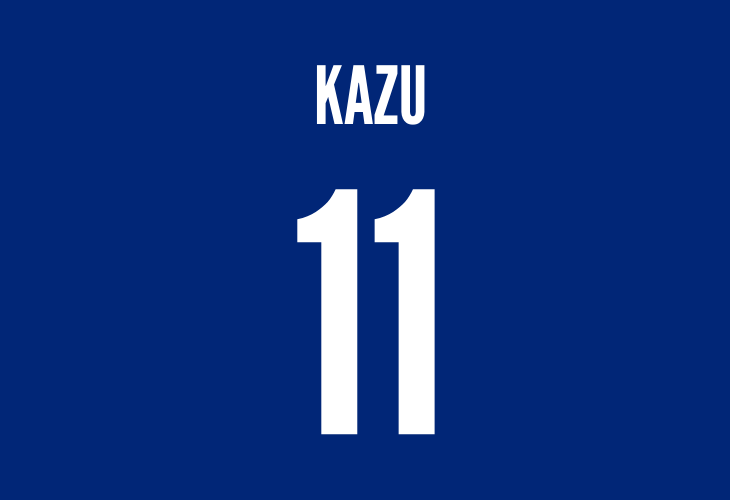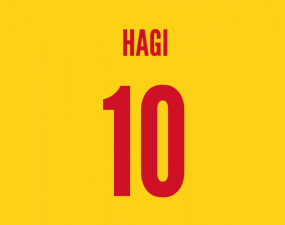Age, as the old saying goes, is just a number. Except for professional athletes. For them, it is something much more foreboding. It is a ticking time bomb which upon hitting 0:00 spells the end of their careers. Footballers’ professional lives are flames which burn brightly but briefly. Even with armies of sports scientists at their clubs and an almost surreal amount of emphasis placed on conditioning and recovery work in their day-to-day lives, footballers are always grimly aware that the thing which gave them their lucrative position in the first place and allowed them to fulfil their childhood dreams, their physical condition, is also the thing which will ultimately end it.
There’s also the bitter-sweet phenomenon which means the harder one plays, the faster their body will deplete. Two of the most prominent examples of this are Wayne Rooney and Alexis Sanchez. Both had remarkably ‘busy’ approaches to the game, storming round the pitch, pressing relentlessly and chasing down would-be lost causes with the kind of fervour which caused their respective fans to fall madly in love with them. But both men have declined dramatically towards the end of their careers. Both, of course, showed flashes of their former brilliance and continue to do so, but neither is the exemplary player they once were.
There are, of course, examples of players who have seemed to improve with age too. Cristiano Ronaldo is the most obvious example, but there are also players like James Milner who have gone on to have some of their best years in the twilight of their illustrious careers. But no one, without exception, personifies this trait better than Yokohama FC’s Kazuyoshi Miura, football’s oldest player.
Miura began his career in 1986, long before most footballers playing the game today were even born, let alone active within the sport. A forward by trade, Miura is a name which will be familiar to fans globally owing to his ripe old age of 52, but most prominently in Brazil and Japan where he spent the majority of his 33-year career in the game.
He began his youth career in 1982 with his high school and was almost immediately scouted by Juventus-SP. No, not the Italian Old Lady, but their Brazilian namesake. He spent four years with the Sao Paulo club, honing his considerable talents and becoming well-versed in Brazil’s language, football and culture. After his scholarship with Juventus-SP drew to a close, Miura signed for Brazilian giants Santos, who also played their football in the city of Sao Paulo.
After appearing alongside the likes of Carlos Alberto and Dunga in the black and white stripes of Santos, Miura made the switch to Palmeiras where he would get his first real taste of top-level professional football. He made 25 appearances for the club in their 1986 Campeonato Brasil campaign before moving on to his third club in a year with Matsubara. He made only a handful of appearances for the club, scoring one goal before moving on again. Though Miura has spent the latter years of his career playing with one club, in his younger years he fully warranted the ‘journeyman’ tag with which he was bestowed.
In 1987, Miura moved down a division in Brazil to play for Clube de Regatas Brasil in Serie B – again, he did not stay long, making just four appearances and failing to score a goal. He had a happier spell with XV de Jau from 1987-1988, the first time he had spent more than a year with a club. His performances didn’t set the world on fire but were enough to earn him a move back to Brazil’s top-flight with Coritiba.
It was at Coritiba that he would win the first of his 16 career trophies, the Campeonato Paraeneses – The state of Parana’s most precious competition – in 1989. Hoping to convert his success at the state level to national level and maybe beyond, Miura returned to Santos in 1990.
Now a more complete player than he was in his first stint with the club four years earlier and definitely more well-travelled (remarkably having played for six clubs in that time), Miura managed to score his first goals for the club but was unable to really cement a place in the club’s first team.
It was when he left Brazil that Miura would become the striking force he had always shown that he could be. He signed for Verdy Kawasaki in 1990 and would spend almost a decade with the club, a far cry from the dotting about he did in Brazil. In just shy of 200 league appearances for the club, who then played in the J.League, Japan’s top-flight, Miura scored exactly 100 league goals.
He did, however, spend one of his eight seasons with the club out on loan with Italian side Genoa. His move to Italy was a move which was meant to propel his career into dizzy new heights; unfortunately, this wasn’t quite what transpired. He played 21 times for Genoa in Serie A – which was then the best and most attractive league in world football – but scored just one goal. Miura would return to Europe but not to the so-called ‘Big Five’ leagues.
Back in Kawasaki, Miura won his first Japan cap in 1990 after he impressed in his first season with the club. They won the league in that campaign and it would turn out to be the first of four successive Japanese league titles. In addition to this success, they also won seven cup competitions in a stunning five-year spell.
In his penultimate season with the club, Miura led the Japan national team to their first World Cup only to be unceremoniously left out of the squad who would play in the 1998 tournament in France. Sadly, Miura would never get the chance to represent Japan on the world stage despite playing in 89 matches and scoring 55 goals, a record which makes him the country’s second-top all-time goalscorer.
Just before the turn of the century, Miura, now aged 32, left Kawasaki in favour of Zagreb in Croatia. Though on a personal level his form was disappointing, Kazu’s time with Croatia Zagreb (now Dinamo Zagreb) was rewarding in that he won the Prva HNL, the top prize in Croatian football, in his one and only season with the club.
He returned to Japan at the end of the season and has spent the rest of his career, bar one season out on loan, in the country of his birth. He had two goal-heavy seasons with Kyoto Purple Sanga before moving on to fellow J1 League side Vissel Kobe. He spent five less prolific but still decent seasons with the club before signing for Yokohama where he has remained since.
Miura was 38 at this point; his move to a second-tier Yokohama was seen as being his swansong, a comfortable retirement home where he could score a few more goals before hanging up his boots. 14 years later, he is still going strong.
One year after signing, Miura made a loan move to Sydney FC in the Australian A-League. He scored twice in his four appearances with the club, but the move was more memorable in that it made him one of very few players to have played on four continents: South America, Asia, Europe and Oceania.
Back in Yokohama, Miura’s club were promoted back to the top flight in 2007 but were immediately relegated the following season. Since then they have spent ten consecutive seasons in the J2 league but last season won promotion to the first division of Japanese football once more. Miura is still yet to hang up his boots and, although his minutes on the pitch have declined severely in the past two seasons, he will be playing top-flight football again next season at the staggering age of 52.




